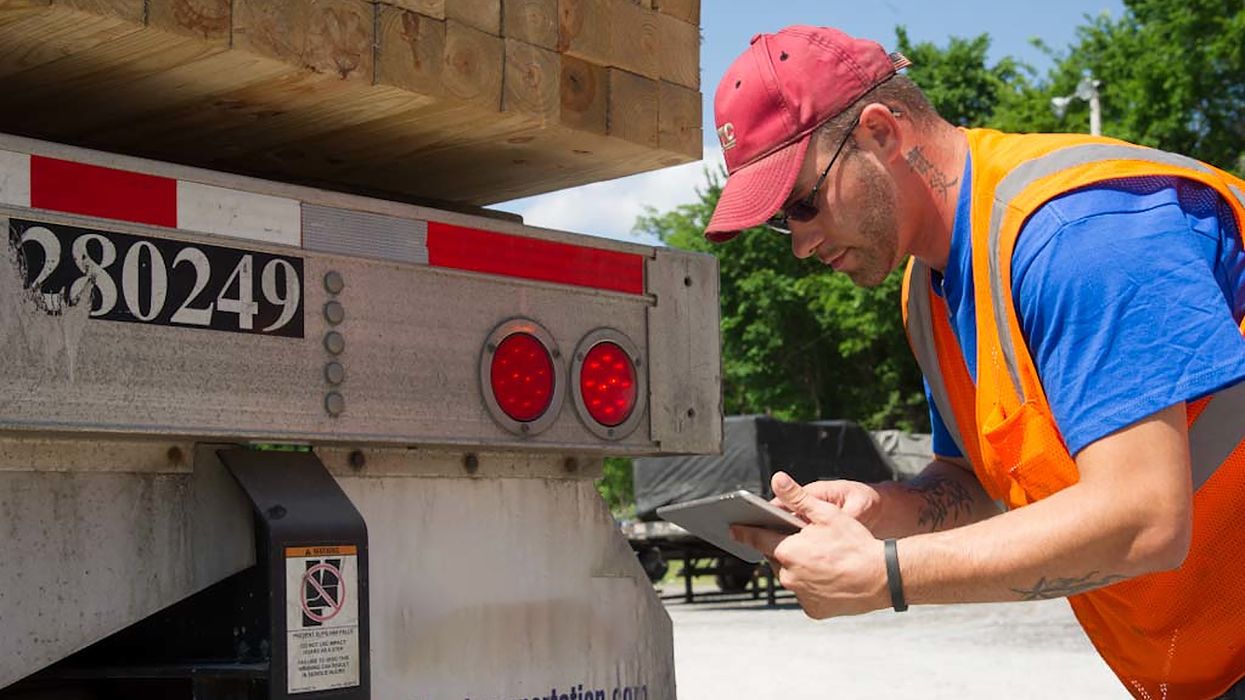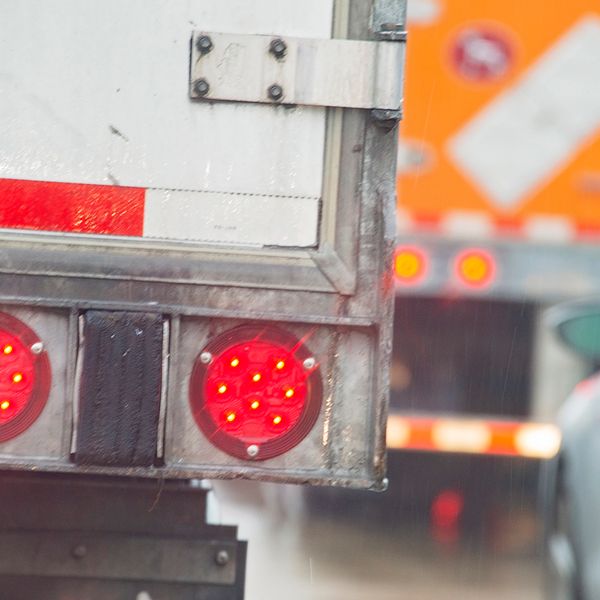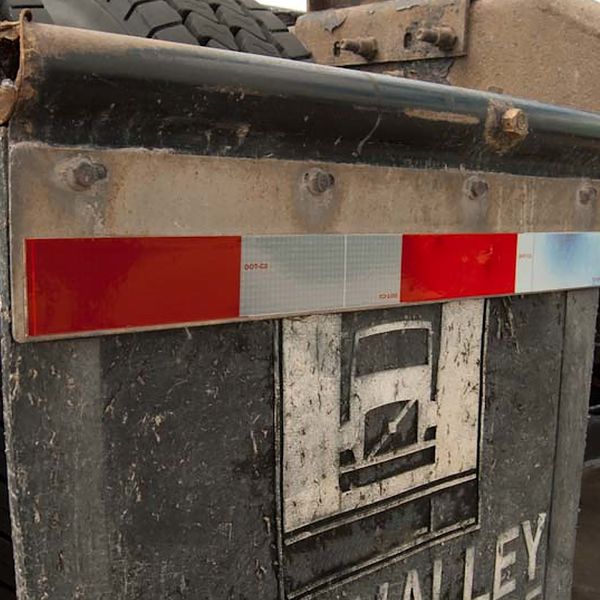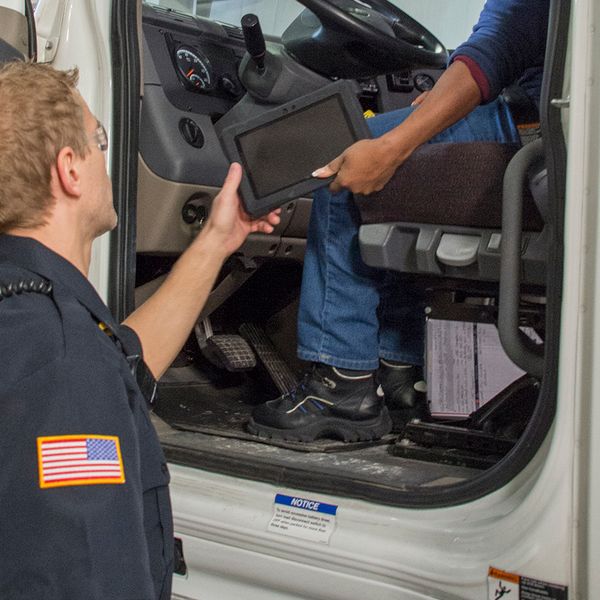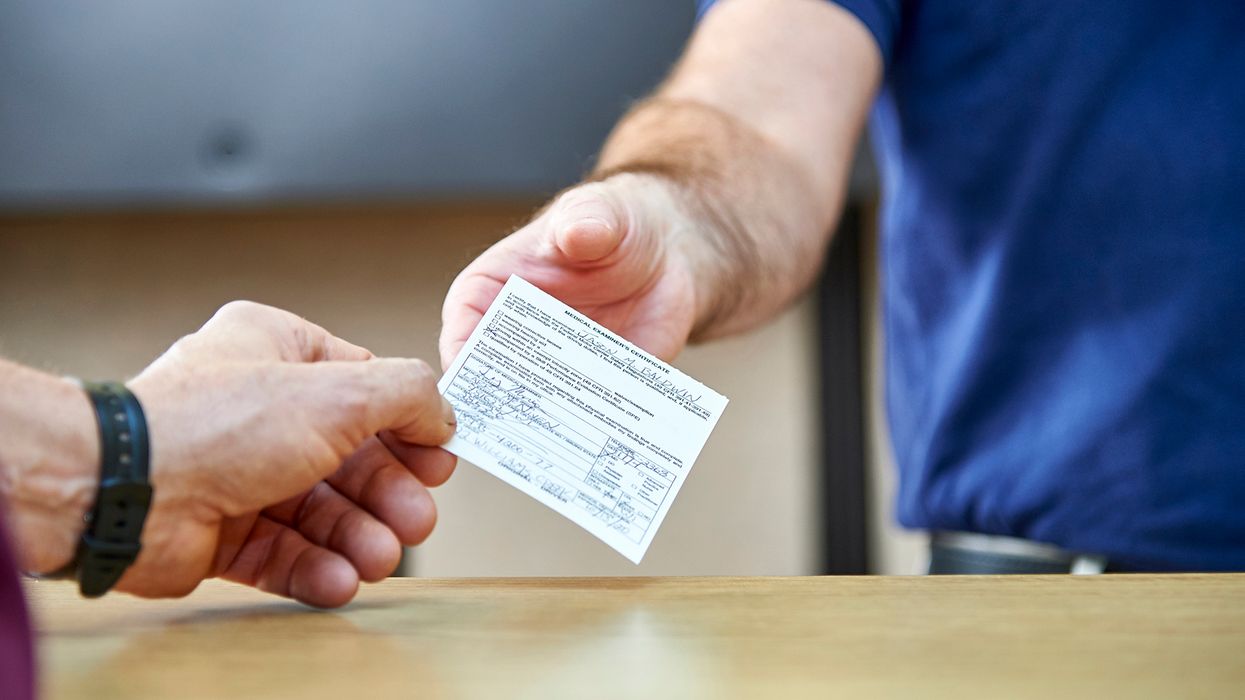Don’t get caught in the dark: What you need to know about Canada’s truck lighting regulations.
Simply put, driving any vehicle in the dark without lights poses a serious risk. This situation is exacerbated by drivers who mistakenly assume that a lit-up dashboard means that their lights are powered on. Such a situation may or may not be true unless appropriately checked. Using proper lights on commercial vehicles, and ensuring they’re mounted in the proper places, is critical, especially during bad weather.
Fortunately, standards in lighting require all types of new vehicles to adhere to the Canadian Vehicle Lighting Regulation.
Shed some light.
Adhering to Canada’s truck lighting requirements assures your drivers of road safety and security. Making sure you are aware of the specific lighting regulations for regular commercial tractors and trailers and oversized tractor/trailer units drastically decreases the risk of injury, death, or damage to life, and property.
Commercial motor vehicles (CMVs) need to be equipped with a specific number of reflective devices, lamps, and associated equipment specially designed to adhere to regulations that might be slightly different from standard passenger vehicles and may differ depending on the jurisdiction of operation.
Truck lighting requirements.
Here are the key lighting equipment requirements for trucks, buses, and multipurpose vehicles (MPVs):
| Headlights | Lower Beam | Minimum of 2 white headlamps on the front, symmetrically placed as far apart as practicable (or outboard or above upper beams in a 4-lamp system). Height from the ground: 560-1370 mm (22-54 inches). |
| Upper Beam | Minimum of 2 white headlamps on the front, symmetrically placed (or inboard or below lower beams in a 4-lamp system). Height from the ground: 560-1370 mm (22-54 inches). | |
| Parking Lights | Required only on vehicles less than 2032 mm (80 inches) wide. Minimum of 2 white or yellow parking lamps on the front, symmetrically placed. Height from the ground: 380-1530 mm (15-60 inches). | |
| Daytime Running Lights (DRL) | Required in Canada, optional in the US. Minimum of 2 white or yellow DRLs on the front, symmetrically placed. Height: 380 mm (15 inches) minimum (maximum depends on DRL type). | |
| Front turn signal / Hazard Warning Lights | Minimum of 2 yellow lamps on the front, symmetrically placed. Height from the ground: 380-2110 mm (15-83 inches). | |
| Front Clearance Lights | Required on vehicles 9.1 meters (30 feet) long or longer. | |
Some of the more important lighting rules for truck tractors and trailers in Canada are:
- Truck tractors are not required to have turn signal lamps situated in the vehicle’s rear as long as the turn signal lamps located near or at the vehicle’s front meet the standards for double-faced turn signals;
- Truck tractors are not required to have rear-side marker devices, rear identification lamps, rear side marker devices as well as rear identification lamps;
- Side marker intermediate devices are not needed on vehicles that measure less than 30 feet or 9.1 metres in total length;
- Reflective materials are allowed to be utilized as side reflex reflectors as long as these meet the standards;
- Trucks that measure less than 80 inches or 2.05 metres in total width are required to have self-canceling signal lights via steering wheel rotation. It must also be cancellable using manual operation; and
- Trailers that measure less than 6 feet or 1.8 metres in total length, with the trailer tongue included, may not need to have front-side marker lamps as well as front-side reflectors.
Jurisdictional spotlights.
| Alberta | Two taillights and two brake lights are required. Plus, a license plate light, clearance lights, right and left turn signals, as well as side markers are needed |
| British Columbia | Mandatory lighting includes brake lights, taillights, turn signals, reflectors, license plate lights. Also, reflectors and clearance lights are needed if the overall width of a trailer is anywhere from 2.05 metres or more. The same lighting requirements apply if a trailer has a gross weight of more than 1,400 kilograms |
| Northwest Territories | Trailers are required to have at least one red taillight as well as a red stoplight located at the vehicle’s rear |
| Prince Edward Islands | The required truck lighting includes license plate lights, brake lights, tail lights, clearance and side lamp markers, reflectors, turn signals, fenders, mudguards |
| Saskatchewan | Truck lighting requirements include tail lights, signal lights, and brake lights. |
Safety and visibility.
Drivers should be trained to recognize and report lighting issues and receive education on proper light usage to minimize glare for other drivers.
In the world of commercial trucking, lighting isn’t just about aesthetics; it’s a matter of safety and compliance. Meeting and surpassing lighting requirements ensures your drivers navigate the night safely while minimizing risks for all road users.
Key to remember: Adherence to regulations must also include going above and beyond to prioritize safety and visibility. Regular maintenance and inspection of lighting systems ensure vehicles have the appropriate number of and types of required lights.

